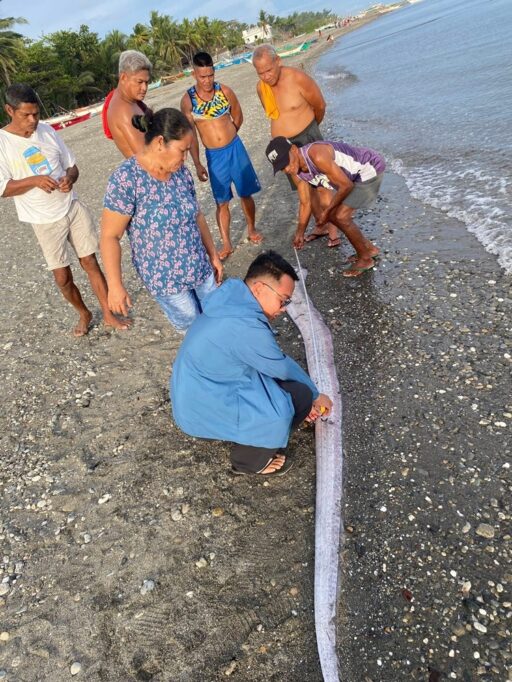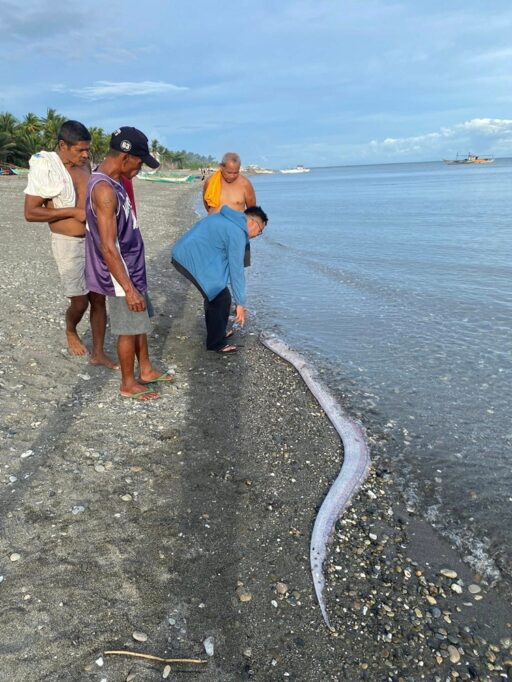Giant Oarfish Washes Up in Oriental Mindoro
ORIENTAL MINDORO — Residents of Dalahican, San Jose, Roxas were stunned on October 14 after discovering an enormous 11-foot oarfish that had washed up on the shore.
According to a local fisherman, he saw the fish weakly swimming toward the beach before it eventually died. The Municipal Agriculture Office of Roxas later confirmed that residents buried the oarfish after finding it lifeless.
Oarfish are rarely seen because they live deep in the ocean, usually between 200 and 1,000 meters below the surface. They belong to a small group of fish called Regalecidae and are known as the longest bony fish in the world. The giant oarfish (Regalecus glesne) can grow up to 8 meters (26 feet) long, with some reports claiming they can reach as much as 11 meters. Their long, ribbon-shaped bodies and shiny silver skin often cause people to mistake them for sea monsters or “sea serpents.”

Because of their strange appearance and rare sightings, oarfish are often linked to myths and superstitions. In Japan, they are called Ryūgū no tsukai, meaning “Messenger from the Sea God’s Palace.” Many believe that when oarfish appear near the shore, it could be a sign that an earthquake or tsunami is coming. This belief became stronger after several oarfish were found before the devastating 2011 Tōhoku earthquake and tsunami.

However, scientists explain that oarfish typically rise to the surface when they are sick, injured, or dying because they cannot survive long in shallow or rough waters. These fish feed on small sea creatures such as shrimp, plankton, jellyfish, and squid. They move gracefully by waving their long dorsal fins and sometimes swim in an upright position while searching for food.

The oarfish found in Mindoro has sparked both fear and curiosity among locals. Yet experts remind the public that its appearance does not always signal danger.
